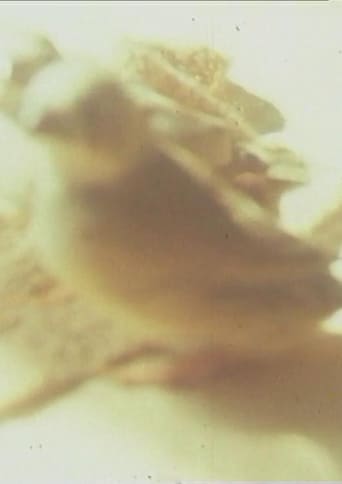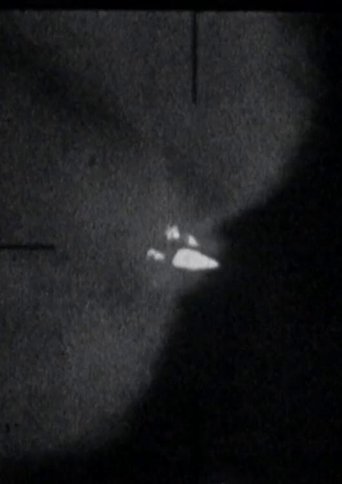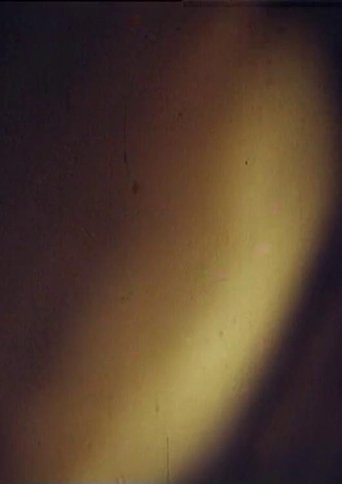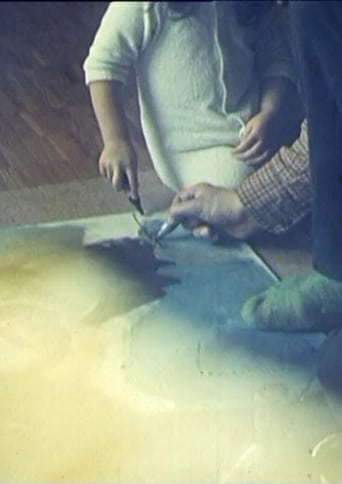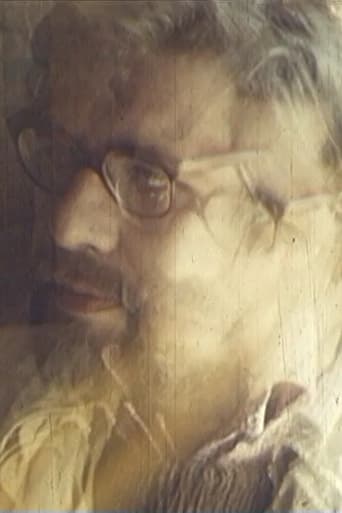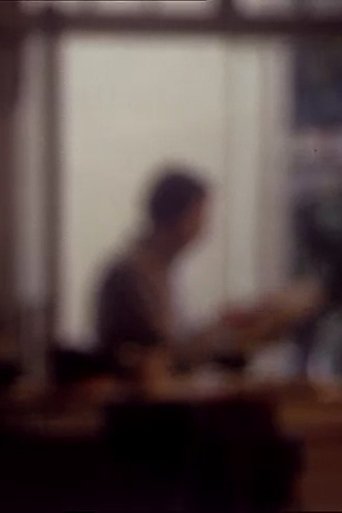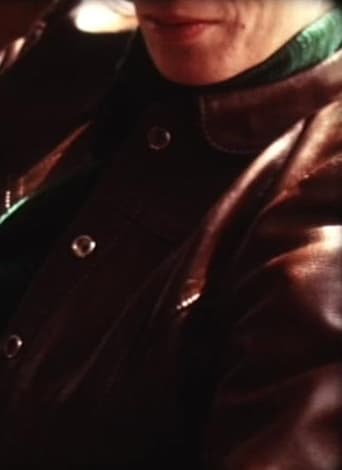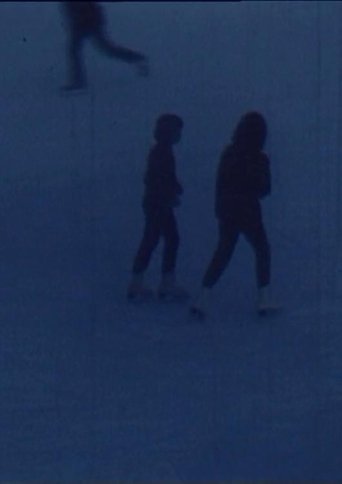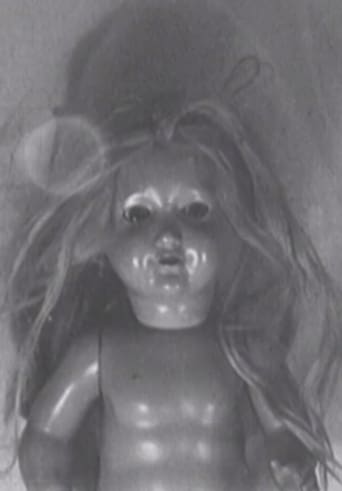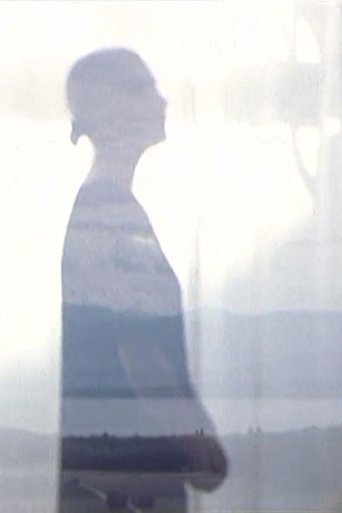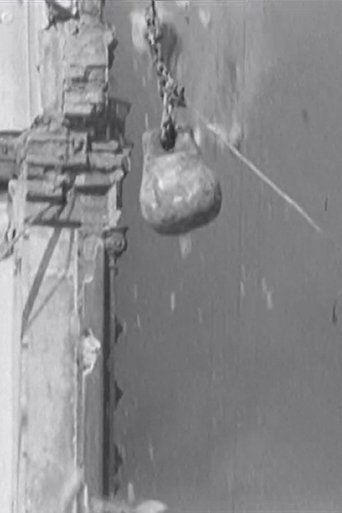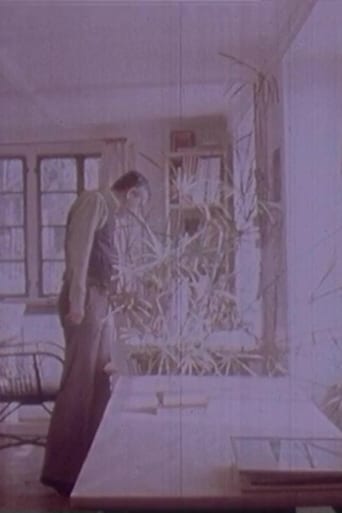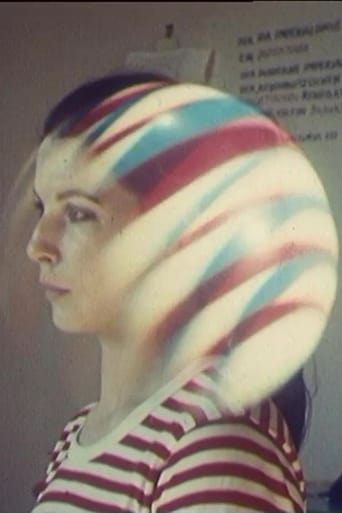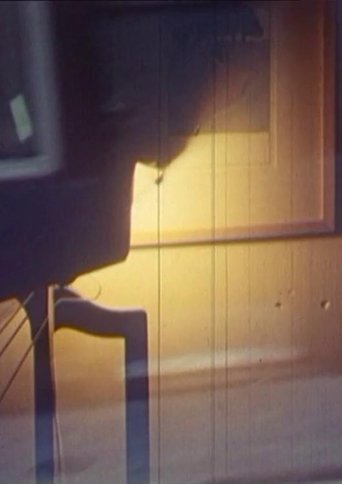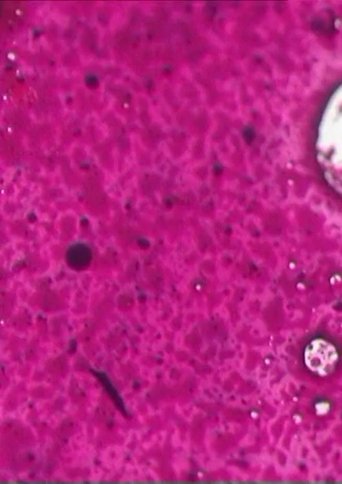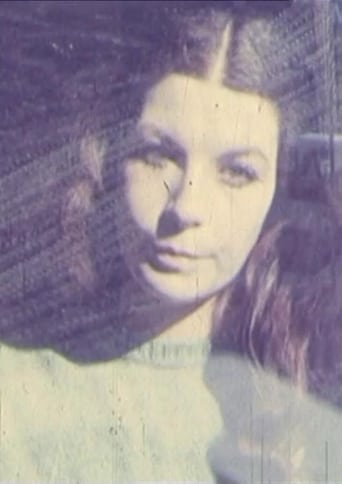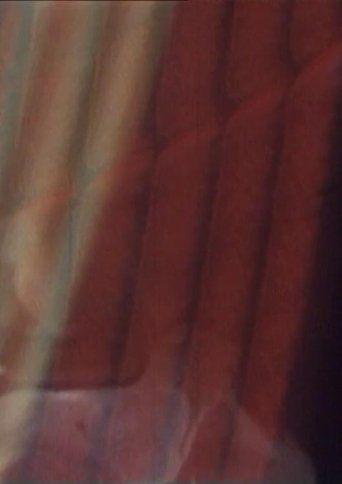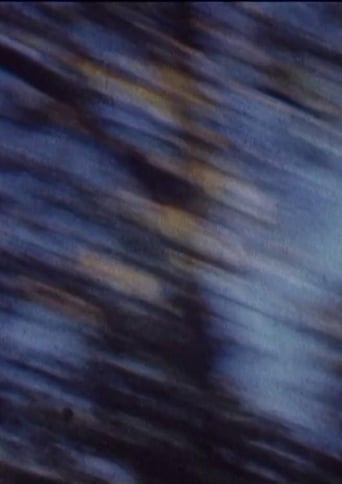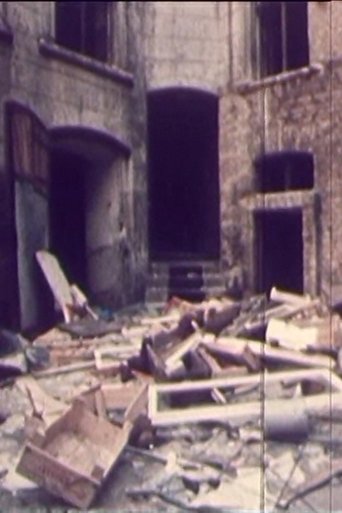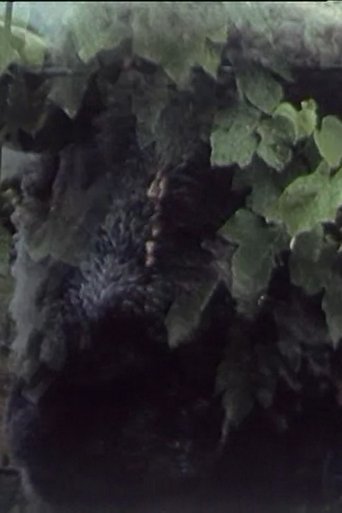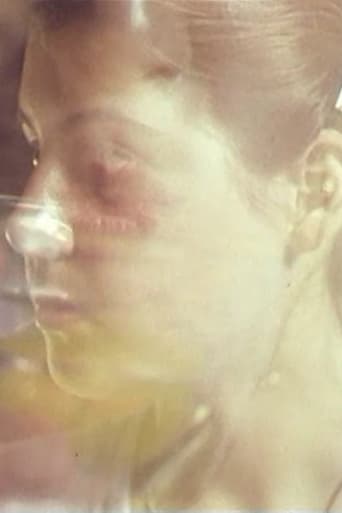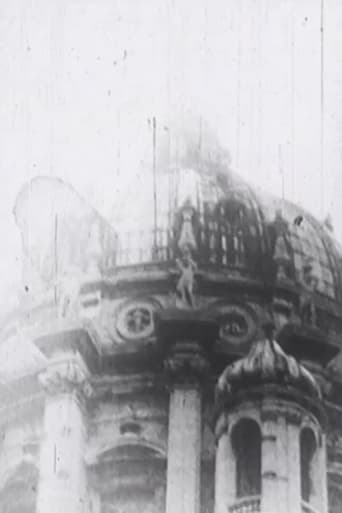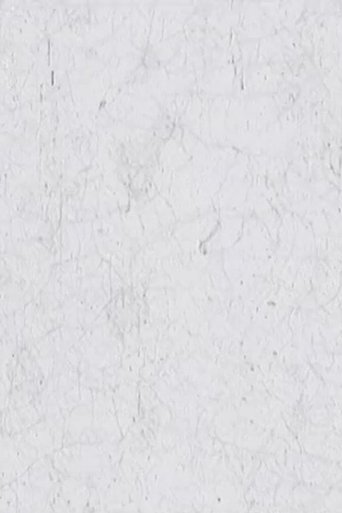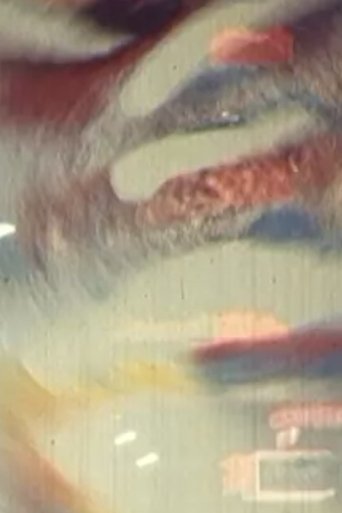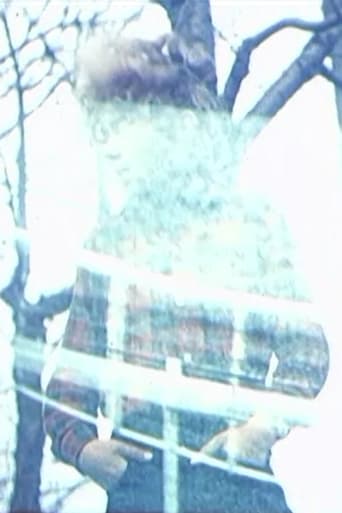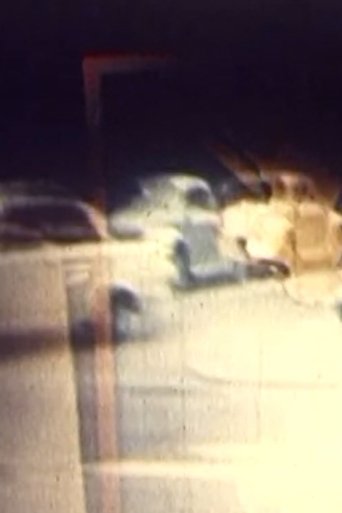HHK Schoenherr
Recently added
Hinweisaktionen
Sep 17, 1970"Actions of Indication is an intermission film, which means it is a film for the intermissions in movie theaters. Get the message: FILM is caviar like BASKIN ROBBINS is ice cream." (HHK)
Kleinbürgerliches Dracula-Idyll am Familientisch
Apr 08, 1979"This idyll was made for a Dracula film project by Ernst Schmidt of Vienna, who wrote to various European filmmakers in order to produce a bigger film with their participation." (HHK)
Daydream and Family
Jun 28, 1968The film Autoportrait is made up of four parts: Part 1: Search, Part 2: Work, Part 3: Daydream, Part 4: Family. Each of the parts can be shown as a self-contained film.
Autoportrait
Jun 28, 1968The film Autoportrait is made up of four parts: Part 1: Search, Part 2: Work, Part 3: Daydream, Part 4: Family. Each of the parts can be shown as a self-contained film.
Das nervöse Kino
Dec 28, 1974Political Portraits
Jan 01, 1969Dedicated to Dieter Meier. voice-over by Gregory Markopoulos, reading an excerpt in English translation of Paul Valéry’s L’Homme et la nuit (Man and the Night).
Metermass Kaputt
Mar 07, 1969Bildabläufe
Jan 28, 1972Ich hasse, ich liebe Film
Apr 09, 1979Eine Hand geht Spazieren
Jan 01, 1970Abbruch
Dec 31, 1969The film was found in the estate of HHK Schoenherr and digitized as part of the "Swiss Film Experiments" research project. The title is taken from the label on the film canister. The film does not appear on any HHK Schoenherr filmography. The attribution to HHK Schoenherr's films is questionable.
Robert Walser
Jan 26, 1978Drama
Robert Walser
Jan 26, 1978Drama
Play 2 & 3
Nov 12, 1968Thaler’s, Meier’s, Sadkowsky’s Life in the Evening
Dec 29, 1967"I wanted to make a portrait of three artists that would show them by primarily using their surroundings. Therefore, the artists themselves would not be in the picture but rooms, objects, where they walk to and where they drive, and personal and impersonal things around the artists would be described. Through the rhythm of the takes, I tried to achieve a poetic flow that would smoothly compliment their personalities. I told myself at the time that pictures and the rhythm of the pictures should be enough to characterize the three." (HHK)
Daydream and Family
Jun 28, 1968The film Autoportrait is made up of four parts: Part 1: Search, Part 2: Work, Part 3: Daydream, Part 4: Family. Each of the parts can be shown as a self-contained film.
Malfilm
Jan 01, 1967Hinweisaktionen
Sep 17, 1970"Actions of Indication is an intermission film, which means it is a film for the intermissions in movie theaters. Get the message: FILM is caviar like BASKIN ROBBINS is ice cream." (HHK)
Sonate: Graubild / Fraubild / Blaubild & Weisskader
Apr 26, 1968"An attempt to make a portrait of my wife." (HHK)
Kleinbürgerliches Dracula-Idyll am Familientisch
Apr 08, 1979"This idyll was made for a Dracula film project by Ernst Schmidt of Vienna, who wrote to various European filmmakers in order to produce a bigger film with their participation." (HHK)
Das Gesicht der alten Frau, Die Suppenterrine, Vreni Keller spricht und der Popo der Madame
Dec 28, 1967"I did the takes for this film in the fall of 1966 and in the summer of 1967. I came to know and love the 'old woman' who gave her 'face' in one of the city-run dining halls in Zurich to the first part of the film. I was looking for poets for the film 'Robert Walser' and was hoping to find one in one of the places Robert Walser used to go to decades before, but it proved to be a complete failure. The woman who gave her 'face' attracted my attention because she bad something radiant about her and, despite her advanced age, still had a roguish way of looking at the world. She must have seen me several times before during test takes, because she told me later that she had seen me getting thrown out ('Filming not permitted') and that this had happened at another city-run dining hall. Because the woman appealed to me so much, I asked her on the spur of the moment if she would be willing to let herself be filmed, even though I did not actually know what I wanted to film." (HHK)
Portrait: Kurt Kren
Sep 19, 1970"This film is an attempt in focusing. I visited Kurt Kren in Vienna. (Kurt Kren is considered to be the father of the European underground film.) Kurt Showed me lots of documents, papers and letters, all about the fights he had with many restaurant owners in Vienna. But the film I made is not about these fights; I tried to focus on the eye of the hurricane, the eye of Kurt Kren. Is this Kurt Kren or isn't it?" (HHK)
Documentary
Sonate: Graubild / Fraubild / Blaubild & Weisskader
Apr 26, 1968"An attempt to make a portrait of my wife." (HHK)
Robert Walser
Jan 26, 1978Drama
Thaler’s, Meier’s, Sadkowsky’s Life in the Evening
Dec 29, 1967"I wanted to make a portrait of three artists that would show them by primarily using their surroundings. Therefore, the artists themselves would not be in the picture but rooms, objects, where they walk to and where they drive, and personal and impersonal things around the artists would be described. Through the rhythm of the takes, I tried to achieve a poetic flow that would smoothly compliment their personalities. I told myself at the time that pictures and the rhythm of the pictures should be enough to characterize the three." (HHK)
Das Gesicht der alten Frau, Die Suppenterrine, Vreni Keller spricht und der Popo der Madame
Dec 28, 1967"I did the takes for this film in the fall of 1966 and in the summer of 1967. I came to know and love the 'old woman' who gave her 'face' in one of the city-run dining halls in Zurich to the first part of the film. I was looking for poets for the film 'Robert Walser' and was hoping to find one in one of the places Robert Walser used to go to decades before, but it proved to be a complete failure. The woman who gave her 'face' attracted my attention because she bad something radiant about her and, despite her advanced age, still had a roguish way of looking at the world. She must have seen me several times before during test takes, because she told me later that she had seen me getting thrown out ('Filming not permitted') and that this had happened at another city-run dining hall. Because the woman appealed to me so much, I asked her on the spur of the moment if she would be willing to let herself be filmed, even though I did not actually know what I wanted to film." (HHK)
Sonate: Graubild / Fraubild / Blaubild & Weisskader
Apr 26, 1968"An attempt to make a portrait of my wife." (HHK)
Das Gesicht der alten Frau, Die Suppenterrine, Vreni Keller spricht und der Popo der Madame
Dec 28, 1967"I did the takes for this film in the fall of 1966 and in the summer of 1967. I came to know and love the 'old woman' who gave her 'face' in one of the city-run dining halls in Zurich to the first part of the film. I was looking for poets for the film 'Robert Walser' and was hoping to find one in one of the places Robert Walser used to go to decades before, but it proved to be a complete failure. The woman who gave her 'face' attracted my attention because she bad something radiant about her and, despite her advanced age, still had a roguish way of looking at the world. She must have seen me several times before during test takes, because she told me later that she had seen me getting thrown out ('Filming not permitted') and that this had happened at another city-run dining hall. Because the woman appealed to me so much, I asked her on the spur of the moment if she would be willing to let herself be filmed, even though I did not actually know what I wanted to film." (HHK)
Das Gesicht der alten Frau, Die Suppenterrine, Vreni Keller spricht und der Popo der Madame
Dec 28, 1967"I did the takes for this film in the fall of 1966 and in the summer of 1967. I came to know and love the 'old woman' who gave her 'face' in one of the city-run dining halls in Zurich to the first part of the film. I was looking for poets for the film 'Robert Walser' and was hoping to find one in one of the places Robert Walser used to go to decades before, but it proved to be a complete failure. The woman who gave her 'face' attracted my attention because she bad something radiant about her and, despite her advanced age, still had a roguish way of looking at the world. She must have seen me several times before during test takes, because she told me later that she had seen me getting thrown out ('Filming not permitted') and that this had happened at another city-run dining hall. Because the woman appealed to me so much, I asked her on the spur of the moment if she would be willing to let herself be filmed, even though I did not actually know what I wanted to film." (HHK)
Sonate: Graubild / Fraubild / Blaubild & Weisskader
Apr 26, 1968"An attempt to make a portrait of my wife." (HHK)
Metermass Kaputt
Mar 07, 1969Portrait: Kurt Kren
Sep 19, 1970"This film is an attempt in focusing. I visited Kurt Kren in Vienna. (Kurt Kren is considered to be the father of the European underground film.) Kurt Showed me lots of documents, papers and letters, all about the fights he had with many restaurant owners in Vienna. But the film I made is not about these fights; I tried to focus on the eye of the hurricane, the eye of Kurt Kren. Is this Kurt Kren or isn't it?" (HHK)
Documentary
Das Gesicht der alten Frau, Die Suppenterrine, Vreni Keller spricht und der Popo der Madame
Dec 28, 1967"I did the takes for this film in the fall of 1966 and in the summer of 1967. I came to know and love the 'old woman' who gave her 'face' in one of the city-run dining halls in Zurich to the first part of the film. I was looking for poets for the film 'Robert Walser' and was hoping to find one in one of the places Robert Walser used to go to decades before, but it proved to be a complete failure. The woman who gave her 'face' attracted my attention because she bad something radiant about her and, despite her advanced age, still had a roguish way of looking at the world. She must have seen me several times before during test takes, because she told me later that she had seen me getting thrown out ('Filming not permitted') and that this had happened at another city-run dining hall. Because the woman appealed to me so much, I asked her on the spur of the moment if she would be willing to let herself be filmed, even though I did not actually know what I wanted to film." (HHK)
Hinweisaktionen
Sep 17, 1970"Actions of Indication is an intermission film, which means it is a film for the intermissions in movie theaters. Get the message: FILM is caviar like BASKIN ROBBINS is ice cream." (HHK)
Thaler’s, Meier’s, Sadkowsky’s Life in the Evening
Dec 29, 1967"I wanted to make a portrait of three artists that would show them by primarily using their surroundings. Therefore, the artists themselves would not be in the picture but rooms, objects, where they walk to and where they drive, and personal and impersonal things around the artists would be described. Through the rhythm of the takes, I tried to achieve a poetic flow that would smoothly compliment their personalities. I told myself at the time that pictures and the rhythm of the pictures should be enough to characterize the three." (HHK)
Sonate: Graubild / Fraubild / Blaubild & Weisskader
Apr 26, 1968"An attempt to make a portrait of my wife." (HHK)
Metermass Kaputt
Mar 07, 1969Thaler’s, Meier’s, Sadkowsky’s Life in the Evening
Dec 29, 1967"I wanted to make a portrait of three artists that would show them by primarily using their surroundings. Therefore, the artists themselves would not be in the picture but rooms, objects, where they walk to and where they drive, and personal and impersonal things around the artists would be described. Through the rhythm of the takes, I tried to achieve a poetic flow that would smoothly compliment their personalities. I told myself at the time that pictures and the rhythm of the pictures should be enough to characterize the three." (HHK)
Portrait: Kurt Kren
Sep 19, 1970"This film is an attempt in focusing. I visited Kurt Kren in Vienna. (Kurt Kren is considered to be the father of the European underground film.) Kurt Showed me lots of documents, papers and letters, all about the fights he had with many restaurant owners in Vienna. But the film I made is not about these fights; I tried to focus on the eye of the hurricane, the eye of Kurt Kren. Is this Kurt Kren or isn't it?" (HHK)
Documentary
Portrait: Kurt Kren
Sep 19, 1970"This film is an attempt in focusing. I visited Kurt Kren in Vienna. (Kurt Kren is considered to be the father of the European underground film.) Kurt Showed me lots of documents, papers and letters, all about the fights he had with many restaurant owners in Vienna. But the film I made is not about these fights; I tried to focus on the eye of the hurricane, the eye of Kurt Kren. Is this Kurt Kren or isn't it?" (HHK)
Documentary
Robert Walser
Jan 26, 1978Drama
Thaler’s, Meier’s, Sadkowsky’s Life in the Evening
Dec 29, 1967"I wanted to make a portrait of three artists that would show them by primarily using their surroundings. Therefore, the artists themselves would not be in the picture but rooms, objects, where they walk to and where they drive, and personal and impersonal things around the artists would be described. Through the rhythm of the takes, I tried to achieve a poetic flow that would smoothly compliment their personalities. I told myself at the time that pictures and the rhythm of the pictures should be enough to characterize the three." (HHK)
Ich hasse, ich liebe Film
Apr 09, 1979Robert Walser
Jan 26, 1978Drama
Ich hasse, ich liebe Film
Apr 09, 1979Kleinbürgerliches Dracula-Idyll am Familientisch
Apr 08, 1979"This idyll was made for a Dracula film project by Ernst Schmidt of Vienna, who wrote to various European filmmakers in order to produce a bigger film with their participation." (HHK)
Kleinbürgerliches Dracula-Idyll am Familientisch
Apr 08, 1979"This idyll was made for a Dracula film project by Ernst Schmidt of Vienna, who wrote to various European filmmakers in order to produce a bigger film with their participation." (HHK)
Portrait: Kurt Kren
Sep 19, 1970"This film is an attempt in focusing. I visited Kurt Kren in Vienna. (Kurt Kren is considered to be the father of the European underground film.) Kurt Showed me lots of documents, papers and letters, all about the fights he had with many restaurant owners in Vienna. But the film I made is not about these fights; I tried to focus on the eye of the hurricane, the eye of Kurt Kren. Is this Kurt Kren or isn't it?" (HHK)
Documentary
Hinweisaktionen
Sep 17, 1970"Actions of Indication is an intermission film, which means it is a film for the intermissions in movie theaters. Get the message: FILM is caviar like BASKIN ROBBINS is ice cream." (HHK)
Daydream and Family
Jun 28, 1968The film Autoportrait is made up of four parts: Part 1: Search, Part 2: Work, Part 3: Daydream, Part 4: Family. Each of the parts can be shown as a self-contained film.
Metermass Kaputt
Mar 07, 1969Daydream and Family
Jun 28, 1968The film Autoportrait is made up of four parts: Part 1: Search, Part 2: Work, Part 3: Daydream, Part 4: Family. Each of the parts can be shown as a self-contained film.
Play 2 & 3
Nov 12, 1968Thaler’s, Meier’s, Sadkowsky’s Life in the Evening
Dec 29, 1967"I wanted to make a portrait of three artists that would show them by primarily using their surroundings. Therefore, the artists themselves would not be in the picture but rooms, objects, where they walk to and where they drive, and personal and impersonal things around the artists would be described. Through the rhythm of the takes, I tried to achieve a poetic flow that would smoothly compliment their personalities. I told myself at the time that pictures and the rhythm of the pictures should be enough to characterize the three." (HHK)
Kleinbürgerliches Dracula-Idyll am Familientisch
Apr 08, 1979"This idyll was made for a Dracula film project by Ernst Schmidt of Vienna, who wrote to various European filmmakers in order to produce a bigger film with their participation." (HHK)
Daydream and Family
Jun 28, 1968The film Autoportrait is made up of four parts: Part 1: Search, Part 2: Work, Part 3: Daydream, Part 4: Family. Each of the parts can be shown as a self-contained film.
Play 2 & 3
Nov 12, 1968Ich hasse, ich liebe Film
Apr 09, 1979Robert Walser
Jan 26, 1978Drama
Robert Walser
Jan 26, 1978Drama
Daydream and Family
Jun 28, 1968The film Autoportrait is made up of four parts: Part 1: Search, Part 2: Work, Part 3: Daydream, Part 4: Family. Each of the parts can be shown as a self-contained film.
Daydream and Family
Jun 28, 1968The film Autoportrait is made up of four parts: Part 1: Search, Part 2: Work, Part 3: Daydream, Part 4: Family. Each of the parts can be shown as a self-contained film.
Das Gesicht der alten Frau, Die Suppenterrine, Vreni Keller spricht und der Popo der Madame
Dec 28, 1967"I did the takes for this film in the fall of 1966 and in the summer of 1967. I came to know and love the 'old woman' who gave her 'face' in one of the city-run dining halls in Zurich to the first part of the film. I was looking for poets for the film 'Robert Walser' and was hoping to find one in one of the places Robert Walser used to go to decades before, but it proved to be a complete failure. The woman who gave her 'face' attracted my attention because she bad something radiant about her and, despite her advanced age, still had a roguish way of looking at the world. She must have seen me several times before during test takes, because she told me later that she had seen me getting thrown out ('Filming not permitted') and that this had happened at another city-run dining hall. Because the woman appealed to me so much, I asked her on the spur of the moment if she would be willing to let herself be filmed, even though I did not actually know what I wanted to film." (HHK)
Metermass Kaputt
Mar 07, 1969Play 2 & 3
Nov 12, 1968Play 2 & 3
Nov 12, 1968Play 2 & 3
Nov 12, 1968Play 22
Apr 09, 1979Play 20
Sep 27, 1973Bildabläufe
Jan 28, 1972Play 22
Apr 09, 1979Bildabläufe
Jan 28, 1972Play 22
Apr 09, 1979Bildabläufe
Jan 28, 1972Bildabläufe
Jan 28, 1972Play 33
Jan 28, 1989Play 33
Jan 28, 1989Play 20
Sep 27, 1973Play 20
Sep 27, 1973Play 22
Apr 09, 1979Play 20
Sep 27, 1973Play 22
Apr 09, 1979Play 33
Jan 28, 1989Play 33
Jan 28, 1989Bildabläufe
Jan 28, 1972Play 20
Sep 27, 1973Play 22
Apr 09, 1979Play 33
Jan 28, 1989Play 20
Sep 27, 1973Play 33
Jan 28, 1989Play 28/29
Sep 02, 1979Play 28/29
Sep 02, 1979Play 28/29
Sep 02, 1979Play 28/29
Sep 02, 1979Play 28/29
Sep 02, 1979Play 28/29
Sep 02, 1979Das Portrait der Cordua
Jun 05, 1969"Location: a ballet company, Mrs. Cordua training alone, training together with another person, head exercises, body exercises, leg and arm exercises, supporting herself, working in the ballet room, taking off her makeup in the dressing room, undressing, washing herself carefully, treating all of the sweaty places of her body (armpits, anus, genitalia), getting dressed, opera house corridors, canteen, driving through the city, typical buildings, shops, factory complexes on the way; apartment—opera house and back, her husband reading the newspaper, sitting, lying down, working, smoking, cooking potatoes, eating potatoes, opening the mail, drinking coffee, filming, caring for feat, mouth, while saying something amusing, hand movement (beheading gesture meaning it is finished), a TV film, dancer relaxing in private, smoking, discussing, disparaging, a TV film, drinking tea, the end: that certain shine in Mrs. Cordua's eyes!" (HHK)
Das nervöse Kino
Dec 28, 1974Autoportrait
Jun 28, 1968The film Autoportrait is made up of four parts: Part 1: Search, Part 2: Work, Part 3: Daydream, Part 4: Family. Each of the parts can be shown as a self-contained film.
Das Portrait der Cordua
Jun 05, 1969"Location: a ballet company, Mrs. Cordua training alone, training together with another person, head exercises, body exercises, leg and arm exercises, supporting herself, working in the ballet room, taking off her makeup in the dressing room, undressing, washing herself carefully, treating all of the sweaty places of her body (armpits, anus, genitalia), getting dressed, opera house corridors, canteen, driving through the city, typical buildings, shops, factory complexes on the way; apartment—opera house and back, her husband reading the newspaper, sitting, lying down, working, smoking, cooking potatoes, eating potatoes, opening the mail, drinking coffee, filming, caring for feat, mouth, while saying something amusing, hand movement (beheading gesture meaning it is finished), a TV film, dancer relaxing in private, smoking, discussing, disparaging, a TV film, drinking tea, the end: that certain shine in Mrs. Cordua's eyes!" (HHK)
Das Portrait der Cordua
Jun 05, 1969"Location: a ballet company, Mrs. Cordua training alone, training together with another person, head exercises, body exercises, leg and arm exercises, supporting herself, working in the ballet room, taking off her makeup in the dressing room, undressing, washing herself carefully, treating all of the sweaty places of her body (armpits, anus, genitalia), getting dressed, opera house corridors, canteen, driving through the city, typical buildings, shops, factory complexes on the way; apartment—opera house and back, her husband reading the newspaper, sitting, lying down, working, smoking, cooking potatoes, eating potatoes, opening the mail, drinking coffee, filming, caring for feat, mouth, while saying something amusing, hand movement (beheading gesture meaning it is finished), a TV film, dancer relaxing in private, smoking, discussing, disparaging, a TV film, drinking tea, the end: that certain shine in Mrs. Cordua's eyes!" (HHK)
Play 4 & 5
Aug 12, 1969The first film made in black-and-white. Made using my own printing technique. Beforehand: This film, which is basically romantic or, even more, a fairy tale film, with carriages, horses, handmade glass lanterns, as solemn as a merry wedding, with an old Rolls Royce standing at a slant completely drunk and whose magnificent big headlights sit crooked on its fenders. An atmosphere of dancing around and returning and light, lamps and life. A film that even takes its audience to Paris, past the Louvre and into the nights of the boulevards; again and again, light, lamps and life. The film is light-hearted: the sonorous tone indicates a change, difficult to under-stand, a threat or do I hear right? Again and again, the streets, the domes of the churches, the palace wings of the Louvre, the National Library and the small opening in the wall at the Palace Mazarin which leads to the small park with its Picasso statue. What happens in Paris?
Das kaputte Kino
Oct 04, 1971"In Germany, I bought an old 35mm Debrie camera. I spent several weeks working with this camera and found that its mechanics were marvelously thought out and that the way the camera was made was proof of the skilled craftsmanship back then. I developed a procedure which also allowed me to use the camera as a printing machine. The printing process is not so different from the filming process, as far as the transport of the film goes . . . It was a lot of fun to try to exhaust the possibilities of the Debrie. It was not only the mechanics that were exciting, like the works of a wonderful old clock, but the numerous possibilities for the realization of the second part of the film, too. This consists mainly of what has already been shot, but offers at least 50% more experimental manipulations in the printed part." (HHK)
Das Portrait der Cordua
Jun 05, 1969"Location: a ballet company, Mrs. Cordua training alone, training together with another person, head exercises, body exercises, leg and arm exercises, supporting herself, working in the ballet room, taking off her makeup in the dressing room, undressing, washing herself carefully, treating all of the sweaty places of her body (armpits, anus, genitalia), getting dressed, opera house corridors, canteen, driving through the city, typical buildings, shops, factory complexes on the way; apartment—opera house and back, her husband reading the newspaper, sitting, lying down, working, smoking, cooking potatoes, eating potatoes, opening the mail, drinking coffee, filming, caring for feat, mouth, while saying something amusing, hand movement (beheading gesture meaning it is finished), a TV film, dancer relaxing in private, smoking, discussing, disparaging, a TV film, drinking tea, the end: that certain shine in Mrs. Cordua's eyes!" (HHK)
Das nervöse Kino
Dec 28, 1974Das nervöse Kino
Dec 28, 1974Play 6
Apr 03, 1970Autoportrait
Jun 28, 1968The film Autoportrait is made up of four parts: Part 1: Search, Part 2: Work, Part 3: Daydream, Part 4: Family. Each of the parts can be shown as a self-contained film.
Autoportrait
Jun 28, 1968The film Autoportrait is made up of four parts: Part 1: Search, Part 2: Work, Part 3: Daydream, Part 4: Family. Each of the parts can be shown as a self-contained film.
Play 4 & 5
Aug 12, 1969The first film made in black-and-white. Made using my own printing technique. Beforehand: This film, which is basically romantic or, even more, a fairy tale film, with carriages, horses, handmade glass lanterns, as solemn as a merry wedding, with an old Rolls Royce standing at a slant completely drunk and whose magnificent big headlights sit crooked on its fenders. An atmosphere of dancing around and returning and light, lamps and life. A film that even takes its audience to Paris, past the Louvre and into the nights of the boulevards; again and again, light, lamps and life. The film is light-hearted: the sonorous tone indicates a change, difficult to under-stand, a threat or do I hear right? Again and again, the streets, the domes of the churches, the palace wings of the Louvre, the National Library and the small opening in the wall at the Palace Mazarin which leads to the small park with its Picasso statue. What happens in Paris?
Das nervöse Kino
Dec 28, 1974Play 6
Apr 03, 1970Das Portrait der Cordua
Jun 05, 1969"Location: a ballet company, Mrs. Cordua training alone, training together with another person, head exercises, body exercises, leg and arm exercises, supporting herself, working in the ballet room, taking off her makeup in the dressing room, undressing, washing herself carefully, treating all of the sweaty places of her body (armpits, anus, genitalia), getting dressed, opera house corridors, canteen, driving through the city, typical buildings, shops, factory complexes on the way; apartment—opera house and back, her husband reading the newspaper, sitting, lying down, working, smoking, cooking potatoes, eating potatoes, opening the mail, drinking coffee, filming, caring for feat, mouth, while saying something amusing, hand movement (beheading gesture meaning it is finished), a TV film, dancer relaxing in private, smoking, discussing, disparaging, a TV film, drinking tea, the end: that certain shine in Mrs. Cordua's eyes!" (HHK)
Play 6
Apr 03, 1970Play 6
Apr 03, 1970Das kaputte Kino
Oct 04, 1971"In Germany, I bought an old 35mm Debrie camera. I spent several weeks working with this camera and found that its mechanics were marvelously thought out and that the way the camera was made was proof of the skilled craftsmanship back then. I developed a procedure which also allowed me to use the camera as a printing machine. The printing process is not so different from the filming process, as far as the transport of the film goes . . . It was a lot of fun to try to exhaust the possibilities of the Debrie. It was not only the mechanics that were exciting, like the works of a wonderful old clock, but the numerous possibilities for the realization of the second part of the film, too. This consists mainly of what has already been shot, but offers at least 50% more experimental manipulations in the printed part." (HHK)
Autoportrait
Jun 28, 1968The film Autoportrait is made up of four parts: Part 1: Search, Part 2: Work, Part 3: Daydream, Part 4: Family. Each of the parts can be shown as a self-contained film.
Play 4 & 5
Aug 12, 1969The first film made in black-and-white. Made using my own printing technique. Beforehand: This film, which is basically romantic or, even more, a fairy tale film, with carriages, horses, handmade glass lanterns, as solemn as a merry wedding, with an old Rolls Royce standing at a slant completely drunk and whose magnificent big headlights sit crooked on its fenders. An atmosphere of dancing around and returning and light, lamps and life. A film that even takes its audience to Paris, past the Louvre and into the nights of the boulevards; again and again, light, lamps and life. The film is light-hearted: the sonorous tone indicates a change, difficult to under-stand, a threat or do I hear right? Again and again, the streets, the domes of the churches, the palace wings of the Louvre, the National Library and the small opening in the wall at the Palace Mazarin which leads to the small park with its Picasso statue. What happens in Paris?
Das Portrait der Cordua
Jun 05, 1969"Location: a ballet company, Mrs. Cordua training alone, training together with another person, head exercises, body exercises, leg and arm exercises, supporting herself, working in the ballet room, taking off her makeup in the dressing room, undressing, washing herself carefully, treating all of the sweaty places of her body (armpits, anus, genitalia), getting dressed, opera house corridors, canteen, driving through the city, typical buildings, shops, factory complexes on the way; apartment—opera house and back, her husband reading the newspaper, sitting, lying down, working, smoking, cooking potatoes, eating potatoes, opening the mail, drinking coffee, filming, caring for feat, mouth, while saying something amusing, hand movement (beheading gesture meaning it is finished), a TV film, dancer relaxing in private, smoking, discussing, disparaging, a TV film, drinking tea, the end: that certain shine in Mrs. Cordua's eyes!" (HHK)
Das nervöse Kino
Dec 28, 1974Das kaputte Kino
Oct 04, 1971"In Germany, I bought an old 35mm Debrie camera. I spent several weeks working with this camera and found that its mechanics were marvelously thought out and that the way the camera was made was proof of the skilled craftsmanship back then. I developed a procedure which also allowed me to use the camera as a printing machine. The printing process is not so different from the filming process, as far as the transport of the film goes . . . It was a lot of fun to try to exhaust the possibilities of the Debrie. It was not only the mechanics that were exciting, like the works of a wonderful old clock, but the numerous possibilities for the realization of the second part of the film, too. This consists mainly of what has already been shot, but offers at least 50% more experimental manipulations in the printed part." (HHK)
Das kaputte Kino
Oct 04, 1971"In Germany, I bought an old 35mm Debrie camera. I spent several weeks working with this camera and found that its mechanics were marvelously thought out and that the way the camera was made was proof of the skilled craftsmanship back then. I developed a procedure which also allowed me to use the camera as a printing machine. The printing process is not so different from the filming process, as far as the transport of the film goes . . . It was a lot of fun to try to exhaust the possibilities of the Debrie. It was not only the mechanics that were exciting, like the works of a wonderful old clock, but the numerous possibilities for the realization of the second part of the film, too. This consists mainly of what has already been shot, but offers at least 50% more experimental manipulations in the printed part." (HHK)
Das kaputte Kino
Oct 04, 1971"In Germany, I bought an old 35mm Debrie camera. I spent several weeks working with this camera and found that its mechanics were marvelously thought out and that the way the camera was made was proof of the skilled craftsmanship back then. I developed a procedure which also allowed me to use the camera as a printing machine. The printing process is not so different from the filming process, as far as the transport of the film goes . . . It was a lot of fun to try to exhaust the possibilities of the Debrie. It was not only the mechanics that were exciting, like the works of a wonderful old clock, but the numerous possibilities for the realization of the second part of the film, too. This consists mainly of what has already been shot, but offers at least 50% more experimental manipulations in the printed part." (HHK)
Autoportrait
Jun 28, 1968The film Autoportrait is made up of four parts: Part 1: Search, Part 2: Work, Part 3: Daydream, Part 4: Family. Each of the parts can be shown as a self-contained film.
Play 6
Apr 03, 1970Play 6
Apr 03, 1970Play 4 & 5
Aug 12, 1969The first film made in black-and-white. Made using my own printing technique. Beforehand: This film, which is basically romantic or, even more, a fairy tale film, with carriages, horses, handmade glass lanterns, as solemn as a merry wedding, with an old Rolls Royce standing at a slant completely drunk and whose magnificent big headlights sit crooked on its fenders. An atmosphere of dancing around and returning and light, lamps and life. A film that even takes its audience to Paris, past the Louvre and into the nights of the boulevards; again and again, light, lamps and life. The film is light-hearted: the sonorous tone indicates a change, difficult to under-stand, a threat or do I hear right? Again and again, the streets, the domes of the churches, the palace wings of the Louvre, the National Library and the small opening in the wall at the Palace Mazarin which leads to the small park with its Picasso statue. What happens in Paris?
Autoportrait
Jun 28, 1968The film Autoportrait is made up of four parts: Part 1: Search, Part 2: Work, Part 3: Daydream, Part 4: Family. Each of the parts can be shown as a self-contained film.
Play 4 & 5
Aug 12, 1969The first film made in black-and-white. Made using my own printing technique. Beforehand: This film, which is basically romantic or, even more, a fairy tale film, with carriages, horses, handmade glass lanterns, as solemn as a merry wedding, with an old Rolls Royce standing at a slant completely drunk and whose magnificent big headlights sit crooked on its fenders. An atmosphere of dancing around and returning and light, lamps and life. A film that even takes its audience to Paris, past the Louvre and into the nights of the boulevards; again and again, light, lamps and life. The film is light-hearted: the sonorous tone indicates a change, difficult to under-stand, a threat or do I hear right? Again and again, the streets, the domes of the churches, the palace wings of the Louvre, the National Library and the small opening in the wall at the Palace Mazarin which leads to the small park with its Picasso statue. What happens in Paris?
Play 4 & 5
Aug 12, 1969The first film made in black-and-white. Made using my own printing technique. Beforehand: This film, which is basically romantic or, even more, a fairy tale film, with carriages, horses, handmade glass lanterns, as solemn as a merry wedding, with an old Rolls Royce standing at a slant completely drunk and whose magnificent big headlights sit crooked on its fenders. An atmosphere of dancing around and returning and light, lamps and life. A film that even takes its audience to Paris, past the Louvre and into the nights of the boulevards; again and again, light, lamps and life. The film is light-hearted: the sonorous tone indicates a change, difficult to under-stand, a threat or do I hear right? Again and again, the streets, the domes of the churches, the palace wings of the Louvre, the National Library and the small opening in the wall at the Palace Mazarin which leads to the small park with its Picasso statue. What happens in Paris?
Supervisuell
Dec 15, 1969Supervisuell
Dec 15, 1969Supervisuell
Dec 15, 1969Unten im Fuchsloch auf dem Kaltacker im Emmental
Apr 08, 1979Emmental is lovely. To us, it looks like something out of a picture book. And this kind of landscape always has a history. And many good artists come from this landscape. And then the cows in this landscape. In Emmental, there are cows that look at passers-by sweetly, with big, pure cow eyes--and gaze after them. Long... In Emmental, each hill has a north side and a warm, beautiful south side. The filmmaker and sheep farmer, Guido Haas, live on the north side of a hill in Emmental, which is called Cold Ground and his house lies low in the valley and is a real Emmental house, with a raised driveway to the barn and a big shingle roof on top. Spiteful, rich neighbors must have gotten the idea of calling it Foxhole.
Unten im Fuchsloch auf dem Kaltacker im Emmental
Apr 08, 1979Emmental is lovely. To us, it looks like something out of a picture book. And this kind of landscape always has a history. And many good artists come from this landscape. And then the cows in this landscape. In Emmental, there are cows that look at passers-by sweetly, with big, pure cow eyes--and gaze after them. Long... In Emmental, each hill has a north side and a warm, beautiful south side. The filmmaker and sheep farmer, Guido Haas, live on the north side of a hill in Emmental, which is called Cold Ground and his house lies low in the valley and is a real Emmental house, with a raised driveway to the barn and a big shingle roof on top. Spiteful, rich neighbors must have gotten the idea of calling it Foxhole.
Supervisuell
Dec 15, 1969Supervisuell
Dec 15, 1969Unten im Fuchsloch auf dem Kaltacker im Emmental
Apr 08, 1979Emmental is lovely. To us, it looks like something out of a picture book. And this kind of landscape always has a history. And many good artists come from this landscape. And then the cows in this landscape. In Emmental, there are cows that look at passers-by sweetly, with big, pure cow eyes--and gaze after them. Long... In Emmental, each hill has a north side and a warm, beautiful south side. The filmmaker and sheep farmer, Guido Haas, live on the north side of a hill in Emmental, which is called Cold Ground and his house lies low in the valley and is a real Emmental house, with a raised driveway to the barn and a big shingle roof on top. Spiteful, rich neighbors must have gotten the idea of calling it Foxhole.
Unten im Fuchsloch auf dem Kaltacker im Emmental
Apr 08, 1979Emmental is lovely. To us, it looks like something out of a picture book. And this kind of landscape always has a history. And many good artists come from this landscape. And then the cows in this landscape. In Emmental, there are cows that look at passers-by sweetly, with big, pure cow eyes--and gaze after them. Long... In Emmental, each hill has a north side and a warm, beautiful south side. The filmmaker and sheep farmer, Guido Haas, live on the north side of a hill in Emmental, which is called Cold Ground and his house lies low in the valley and is a real Emmental house, with a raised driveway to the barn and a big shingle roof on top. Spiteful, rich neighbors must have gotten the idea of calling it Foxhole.
Unten im Fuchsloch auf dem Kaltacker im Emmental
Apr 08, 1979Emmental is lovely. To us, it looks like something out of a picture book. And this kind of landscape always has a history. And many good artists come from this landscape. And then the cows in this landscape. In Emmental, there are cows that look at passers-by sweetly, with big, pure cow eyes--and gaze after them. Long... In Emmental, each hill has a north side and a warm, beautiful south side. The filmmaker and sheep farmer, Guido Haas, live on the north side of a hill in Emmental, which is called Cold Ground and his house lies low in the valley and is a real Emmental house, with a raised driveway to the barn and a big shingle roof on top. Spiteful, rich neighbors must have gotten the idea of calling it Foxhole.
Supervisuell
Dec 15, 1969Unten im Fuchsloch auf dem Kaltacker im Emmental
Apr 08, 1979Emmental is lovely. To us, it looks like something out of a picture book. And this kind of landscape always has a history. And many good artists come from this landscape. And then the cows in this landscape. In Emmental, there are cows that look at passers-by sweetly, with big, pure cow eyes--and gaze after them. Long... In Emmental, each hill has a north side and a warm, beautiful south side. The filmmaker and sheep farmer, Guido Haas, live on the north side of a hill in Emmental, which is called Cold Ground and his house lies low in the valley and is a real Emmental house, with a raised driveway to the barn and a big shingle roof on top. Spiteful, rich neighbors must have gotten the idea of calling it Foxhole.
Play
Jan 01, 1968As a word, play stands for playing, playful, giving full play to your imagination, play-acting style, play at passion, playground, manner of playing, playing for time, phase of play, playing a joke, play document, playing field, playroom, and everything that has to do with film, the film stock, with its color and black/white. Unexposed, overexposed and double-and multiple-exposed film, waste material and the creations of fancy.
